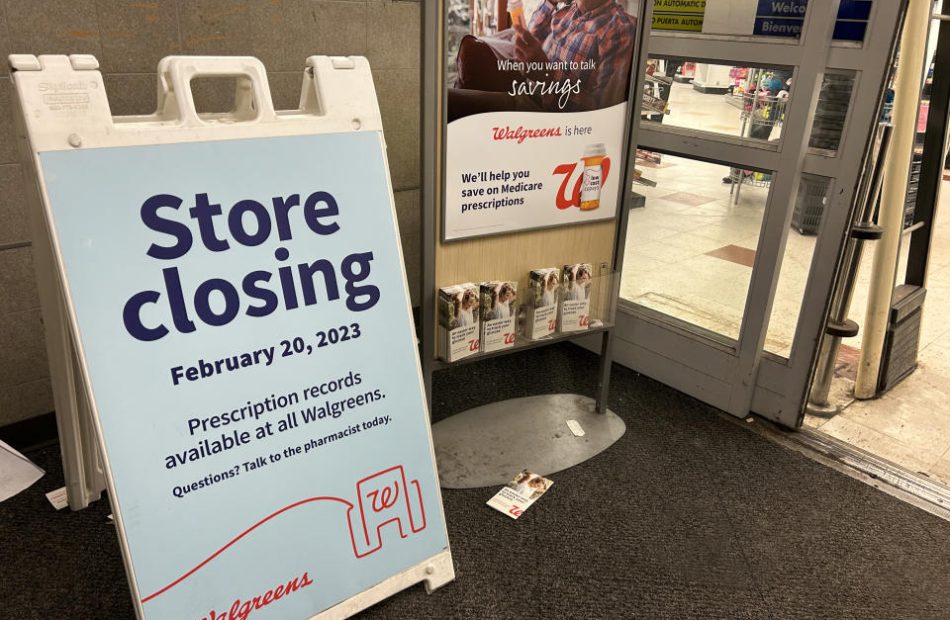Walgreens closing 1,200 stores over next 3 years, 800 more under evaluation
Walgreens Boots Alliance (WBA) announced more store closures Tuesday, as the retail pharmacy giant continues to face pressure from the growth of online prescription delivery platforms and ongoing retail constraints.
Walgreens will close 500 stores next year, toward the end of the year, and reach a total of 1,200 store closings in the next three years, according to company executives on a fourth quarter earnings call today.
The number had not been previously announced, but Walgreens indicated up to 2,000 store closures coming during an earnings call in June. Walgreens stock jumped more than 12% in trading Tuesday on the news — signaling the move was no surprise, and even welcome, to investors.
The company announced fiscal fourth quarter earnings in line with expectations, with a loss per share of $3.48 compared to $0.21 in the same quarter in 2024. Revenues, meanwhile, increased 6% year over year to $37.5 billion.
Mary Langowski, president of US healthcare at the company, said the moves made to date have focused on near-term shareholder value. For fiscal year 2025, the company will focus on the growth of core lines of business, including the pharmacies and specialty pharmacy services.
CEO Tim Wentworth said during the earnings call Tuesday that when he took the top spot last year, he was focused on ensuring the struggling retailer takes steps to cut expenses and has since successfully reduced net debt by $1.9 billion.
But there is still more work to be done. “Building on this momentum is critical as we turn our executional focus to stabilizing our core economics,” Wentworth said.
The store closures, or “footprint optimization” strategy, is focused on what Wentworth has called “re-orienting” the company as a retail pharmacy. Wentworth said he doesn’t expect further cuts in the 300,000-member workforce, which is already strained.
“We don’t have a ton of de-staffing left in the stores … our stores are tight. That’s not where you will see us making a difference,” he said.
More closures expected
The move to close stores is just part of the first phase, along with VillageMD closures announced earlier this year, of a “right-sizing” process for the company.
“While the decision to close the store is never an easy one, we feel confident in our ability to continue to serve our customers,” Wentworth said, adding that affected employees would be redeployed to other locations.
Walgreens is working with patients to ensure the prescription fills are not interrupted, including through home delivery if they are not close enough to another location. But the company isn’t including that as part of its future modeling for the business — indicating it is unsure what the fallout will be. But the stores that are closing have low volume and are making very little money, executives said on the call Tuesday.
“We are prioritizing closing locations that are cash flow negative, underperforming stores where we own the locations, and ones where the lease expirations are coming due in the next few years,” said CFO Manmohan Mahajan.
He added that based on the previously disclosed 2,000 store target, another 800 stores are being evaluated for closure.
Wentworth said that the shake-up of the retailer isn’t over. “We are in the early stages of a turnaround that will take time. The fiscal fourth quarter was an important building block in the foundation of this turnaround, and we expect further progress in fiscal 2025,” Wentworth said.
Battling PBM reimbursements
In addition to the store closures, Wentworth also said the company has been aggressively pursuing fairer reimbursement for prescriptions by pharmacy benefit managers (PBMs). The issue of reimbursements has been impacting pharmacies large and small in recent years.
“Today, we have a high level of visibility into reimbursement for approximately 80% of the anticipated script volume in fiscal 2025. We are pleased with the willingness that some of our PBM partners have shown to consider current trends and adjust reimbursement,” Wentworth said.
He said the company has been engaged in tough negotiations with PBMs and ensured that all sales to patients — no matter how they pay — aren’t a loss to the company.
“We’re willing to walk away from a line of business if it doesn’t make sense. I’ve said that … we would rather have 5% of the cash-paying cadre than 100% of a reimbursed contract,” Wentworth said.
There are still more contracts that are under negotiation, but Wentworth said that the current state of contracts is “right where I would expect us to be” to ensure stronger revenues for the upcoming fiscal year.
Anjalee Khemlani is the senior health reporter at Yahoo Finance, covering all things pharma, insurance, care services, digital health, PBMs, and health policy and politics. That includes GLP-1s, of course. Follow Anjalee on most social media platforms @AnjKhem.


Leave a Reply